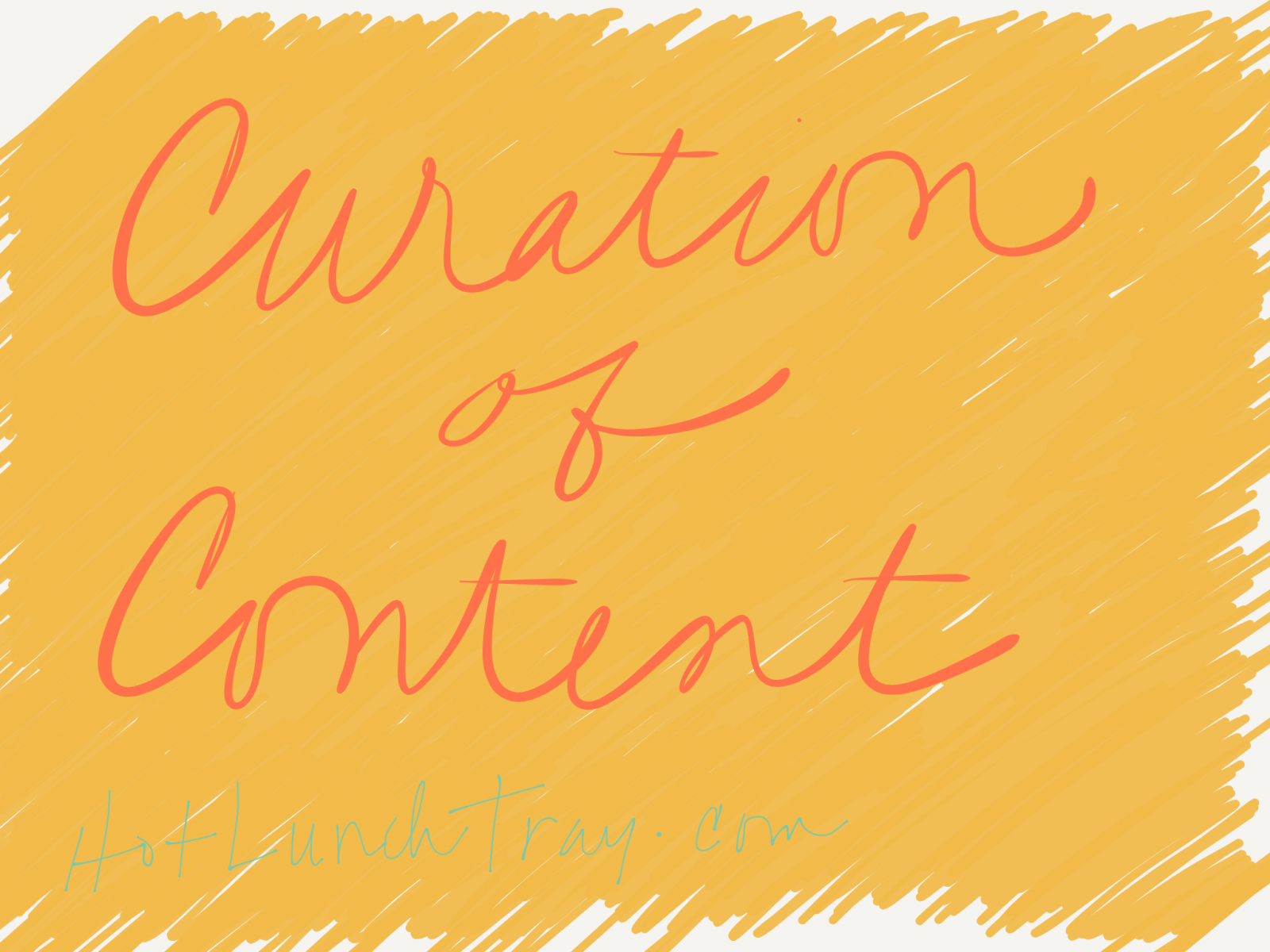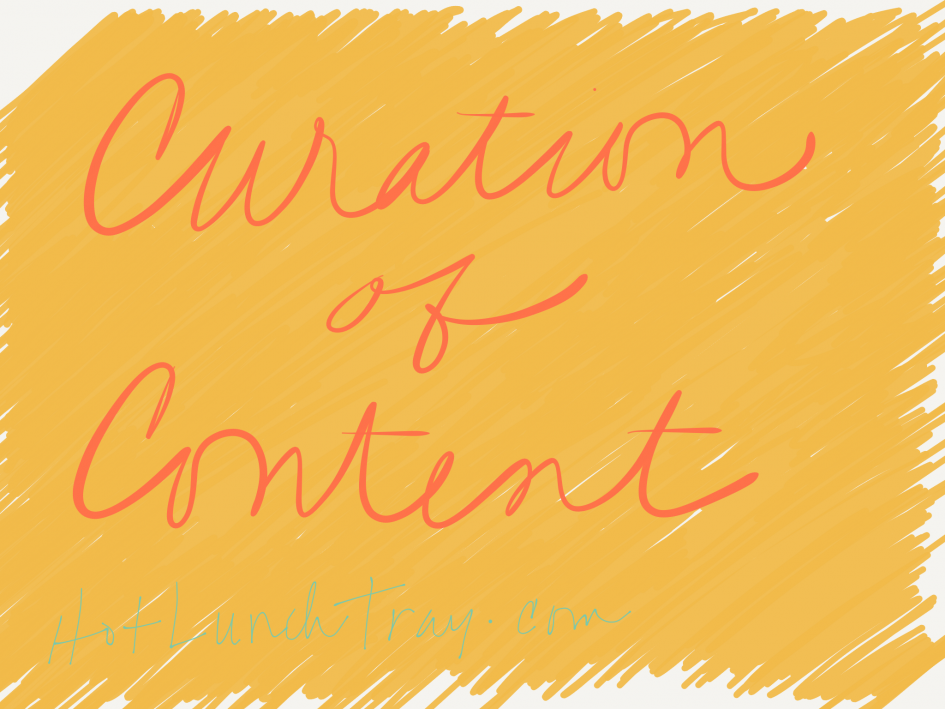Walking in to Steven Anderson’s session on Curating Content the Right Way I felt okay about the curation of my professional learning. I knew he had a book out on the subject Curate This: The Hands-On, How-To Guide To Content Curation and I was expecting a preview. I *did not* feel so okay by the end of the session. By the end I had identified numerous things to change, more than just my personal curating.

Pre-Presentation Chat
Sitting with a colleague, we chatted about the efficient and inefficient ways content is shared in our district. It became apparent to me that I had thought too highly of a new, unproven method. This made me feel sad for a couple of reasons. First, I promoted an idea which was a substitution of a previous method. Potentially the cycles of sharing could increase, but it remains largely unproven. {In Technology we should guard against substituting new, but not improved, version of things. I fell into my own trap. I promoted something which was different and not better. That practice undermines our credibility and the useful potential of technology.} Second, I was reminded that teachers used to receive time to meet together from around the district. Time is so precious. I now wondered about the unproven nature of one person being given the burden of curating for a large group of people; but the large group of people also missing out on that time together. I need to watch this curation format with a more critical eye until we have data one way or another to tell if this is helpful to teachers.
And then the session began.
Avoid Overload
Curation is at heart about organizing items for future use. A secondary benefit is the exchange of curated resources between trusted sources, those you follow and those who follow you. Curating resources combats overload.
We all know what overload is, you sit down to look up one thing on the Internet and before you know it you’ve ordered pants. Links often present as equal – or worse – newer links as more valuable. And you sit down for one thing, but all the way links present themselves do not help you accomplish your goal; uncurated links take your time and purpose away from you unless you are strategic in how you navigate content. That feeling when you realize you are one hour into something that you haven’t even started yet, if you can remember. That is overload.
Curation can help you in online areas which are not free-search centric. And they can build your online reputation and help your followers too.
Museum Exhibits
Just as Museum exhibits tell a story, you want to keep narrative(s) throughout your collections. Steve recommends the idea of purging and restaging your museum about every 6 months. This is challenging. Steve also revealed that he is behind on this idea, which leads me to question if it is worthwhile at all? It is the least of the steps with which I am concerned.
Save, Evaluate, Share
My current curation process relies heavily on If This Than That, IFTTT.com. Tweets with certain hashtags and posts to my Strictly School Pinterest board save to my Delicious account. I love that Delicious links are able to share as a URL representing a tag. For instance, anything I tweet with #BlendedLearning saves to Delicious under the tag “BlendedLearning.” I then share with you the URL: https://del.icio.us/pen63/blendedlearning This requires front-end planning; I think about the greatest source of where I get my information – either Twitter or Feedly – and then I utilize IFTTT to save to my preferred places.
To really evaluate my content, I like his work flow. Steve uses Pocket as a place to initially save for evaluation in his process. Prior to his session I had not thought about: Where do ideas wait for you to evaluate them and send them to the appropriate place? I added Pocket to my blog post sharing widget about one year ago, but had not really investigated the product. I certainly had not thought of it as an intermediary for my curation process. Finally, I inserted it into my IFTTT strategy today; when I tag items “save” in Pocket it now goes to Delicious.
To share my content is actually the easiest part of all of this. It is ready and on-hand when I want to share – via tags within Delicious. Delicious has been through some odd growth since 2004. While I am heavily invested in Delicious, if you start to look for a social bookmarking site now I recommend Diigo.
What is Next?
I have this on my To Read list Content Curation: How to Avoid Information Overload and hope a slow read reveals even more ways I can upgrade my process.
How are you Curating?
I am so excited to talk about this now. I realize there must be so many ways to curate our personal professional learning. Do you have great methods and/or tools to share?






3 Pingbacks